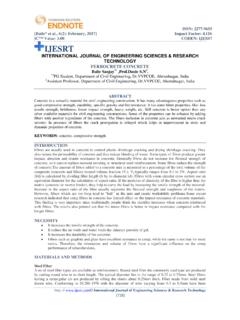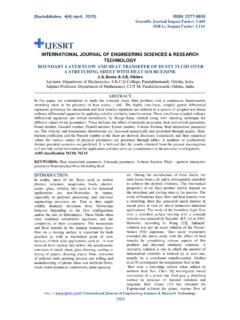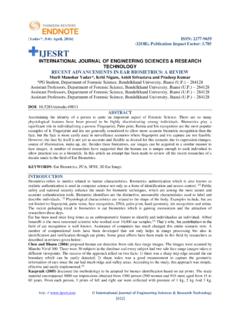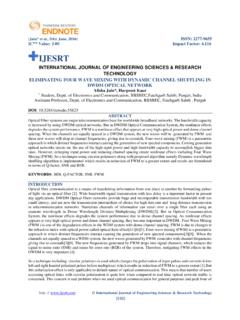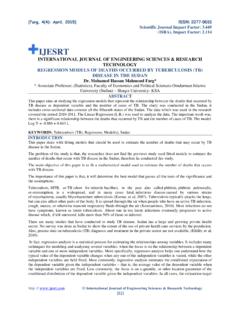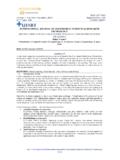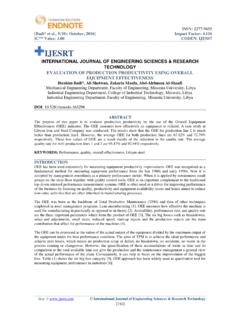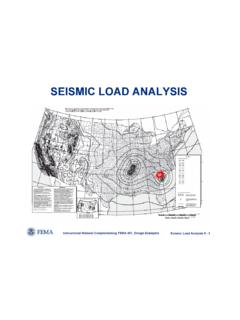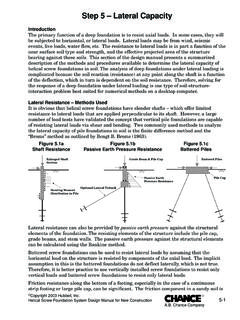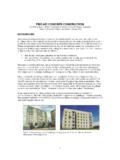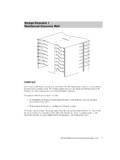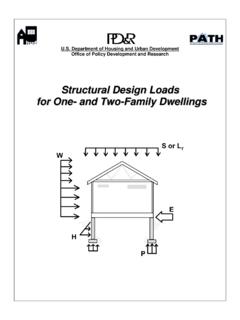Transcription of A SEISMIC COMPARISON OF RC SPECIAL MOMENT …
1 ISSN: 2277-9655 [Yadav* et al., 6(2): February, 2017] Impact Factor: IC Value: CODEN: IJESS7 http: // International Journal of Engineering Sciences & Research Technology [537] IJESRT INTERNATIONAL JOURNAL OF ENGINEERING SCIENCES & RESEARCH TECHNOLOGY A SEISMIC COMPARISON OF RC SPECIAL MOMENT RESISTING FRAME CONSIDERING REGULAR AND IRREGULAR STRUCTURES Amit Kumar Yadav*, Prof. Anubhav Rai * Department of Civil Engineering Gyan Ganga Institute of Technology and Sciences, Jabalpur ( ),India. 482003 DOI: ABSTRACT A comparative study of all the types of frames will shed light on the best suited frame to be adopted for SEISMIC loads in Indian scenario. SEISMIC evaluation will provide a general idea about the building performance during an earthquake.
2 In this report SPECIAL MOMENT Resisting Frame is considered as structural frame and COMPARISON are made in various SEISMIC zones. The objective of this study is to investigate the SEISMIC behaviour of reinforced cement concrete structure having SMRF ( SPECIAL MOMENT Resisting frame) in nature. For this purpose regular and irregular structures were modelled and analysis was done using software and using the codes for analysis, IS 1893:2002, IS 456: 2000. The study assumed that the buildings were located in all SEISMIC zones KEYWORDS: SEISMIC Behaviour, SMRF, model, analysis, INTRODUCTION The selection of a particular type of framing system depends upon two important parameters SEISMIC risk of the zone and the budget.
3 The lateral forces acting on any structure are distributed according to the flexural rigidity of individual components. Indian Codes divide the entire country into four SEISMIC zones (II, III, IV & V) depending on the SEISMIC risks. OMRF is probably the most commonly adopted type of frame in lower SEISMIC zones. However with increase in the SEISMIC risks, it becomes insufficient and SMRF frames need to be adopted. A rigid frame in structural engineering is the load resisting skeleton constructed with straight or curved members interconnected by mostly rigid connections which resist movements induced at the joints of members. Its members can take bending MOMENT , shear, and axial loads.
4 They are of two types: Rigid-framed Structures & Braced-frames Structures The two common assumptions as to the behaviour of a building frame are that its beams are free to rotate at their connections and that its members are so connected that the angles they make with each other do not change under load. MOMENT -resisting frames are rectilinear assemblages of beams and columns, with the beams rigidly connected to shear, amount of reinforcement etc. MOMENT frames have been widely used for SEISMIC resisting systems due to their superior deformation and energy dissipation capacities. A MOMENT frame consists of beams and columns, which are rigidly connected. The components of a MOMENT frame should resist both gravity and lateral load.
5 Lateral forces are distributed according to the flexural rigidity of each component. The main aims of the present study are as follows: To model structures for analyzing multi-storeyed frames having SMRF configurations. To carry out the analysis of the selected buildings in all SEISMIC zone. To analyse regular and irregular structure and find out effective one. To make a comparative study with the help of results like bending MOMENT , shear force, displacement etc. LITERATURE REVIEW Najif Ismail (2008): explain all structural systems are not treated equal when response to earthquake-induced forces is of concern. Aspects of structural configuration, symmetry, mass distribution, and vertical regularity must be considered.
6 The importance of strength, stiffness, and ductility in relation to acceptable response must also be appreciated. While considering the lateral force resisting systems we come up with so many options to have structural systems like Bearing wall systems, MOMENT Resisting frames, Lateral Bracing systems, designing the ISSN: 2277-9655 [Yadav* et al., 6(2): February, 2017] Impact Factor: IC Value: CODEN: IJESS7 http: // International Journal of Engineering Sciences & Research Technology [538] MOMENT resisting concrete frame structures we have option to use IMRF, OMRF or SMRF. The basic step in conceptual design is to find the best suitable framing system and then lateral load resisting mechanism, while designing structures in the field mostly engineers face problem about the decision of Response Modification Factor R which is a measure of ductility and over strength of the structures.
7 It is used to find the base shear which is distributed on different stories. SMRF and IMRF being emphasized in the research and a detailed computer simulation of the different RCC structures in zone 2 B with different R values , and given in UBC-1997 are used. Total 04 Structures with different heights of stories, Plans and No. of stories are modelled in software which uses the advanced finite element method to analyse the structure. The conclusions are drawn from the research for the approximation of the most suitable R values and to check the reliability of the values given in UBC. Kiran Parmar et. al. (2013) deals with the COMPARISON between three dual lateral load resisting systems in the multistory buildings.
8 Dual system which used in the multistory building to resist lateral loads (wind/earthquake) are used in this study are 1. MOMENT resisting frame with shear wall (MRSW) 2. MOMENT resisting frame with bracing (MRBR) 3. Flat slab with shear wall (FSSW). The COMPARISON shows the efficiency of dual system for lateral load resistance at variable heights of buildings. E-tab software is used for make this study done. The present study deals with analysis of these systems and their suitability against deformation at different heights. Ambika-Chippa et. al. (2014) compare SEISMIC analysis and design of RC MOMENT resisting space frame with shear wall (Dual System). In MOMENT resisting frame and dual system, two different cases were selected for the study.
9 In MOMENT resisting frame SPECIAL MOMENT Resisting Frame and Ordinary MOMENT Resisting Frame were considered with Variations of heights, (G+4), (G+6),(G+8), (G+10) , and bays viz. (2x2),(3x3),(4x4),(5x5),(6x6) for bare frame and frame with brick infill, and in dual system, structure with shear wall and without shear wall were considered with (G+8) storey for (5x5) bay for frame with brick infill with same loading conditions. Frame has been analyzed and designed using STAAD ProV8i software referring IS: 456-2000, IS: 1893 (Part-1)2002 and detailing is made according to IS: 13920-1993. From these data, cost is calculated and economic structure is being found out.
10 Siva Prasad et. al. (2013) investigated the SEISMIC behavior of the structure OMRF (Ordinary MOMENT resisting frame) & SMRF ( SPECIAL R C MOMENT Resisting frame). For this purpose 5th, 10th, 15th , 20th storied structure were modeled and analysis was done using software and using the codes for analysis, IS 1893:2002, IS 456: 2000. The study assumed that the buildings were located in SEISMIC zone II (Visakhapatnam region).The study involves the design of alternate shear wall in a structural frame and its orientation, which gives better results for the OMRF & SMRF structure constructed in and around Visakhapatnam region. The buildings are modeled with floor area of 600 sqm (20m x30m) with 5 bays along 20 m span each 4 m.
